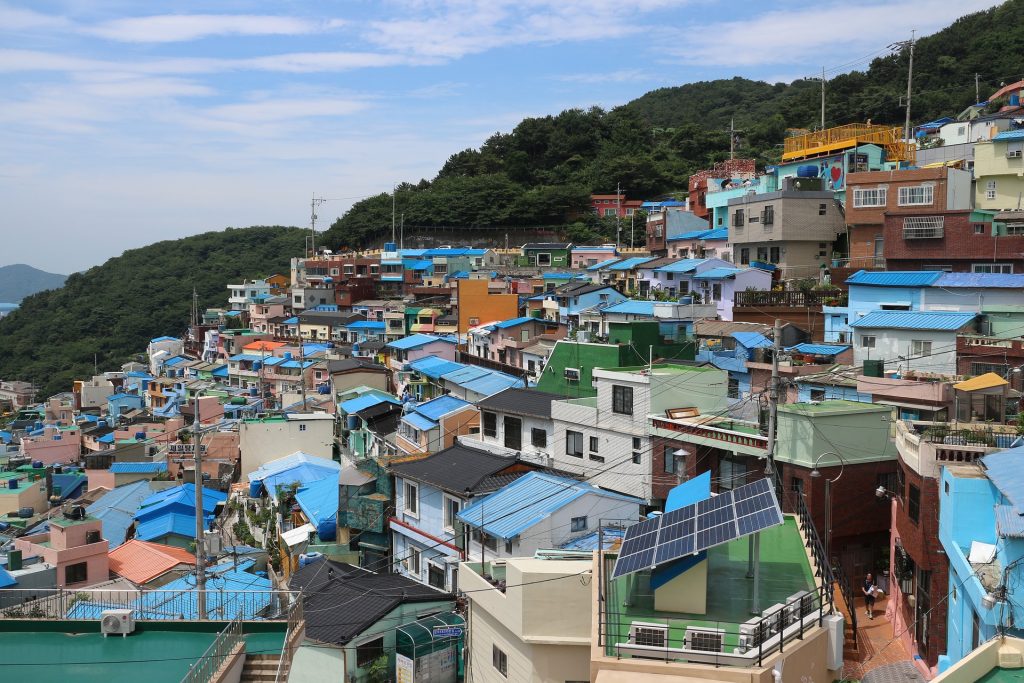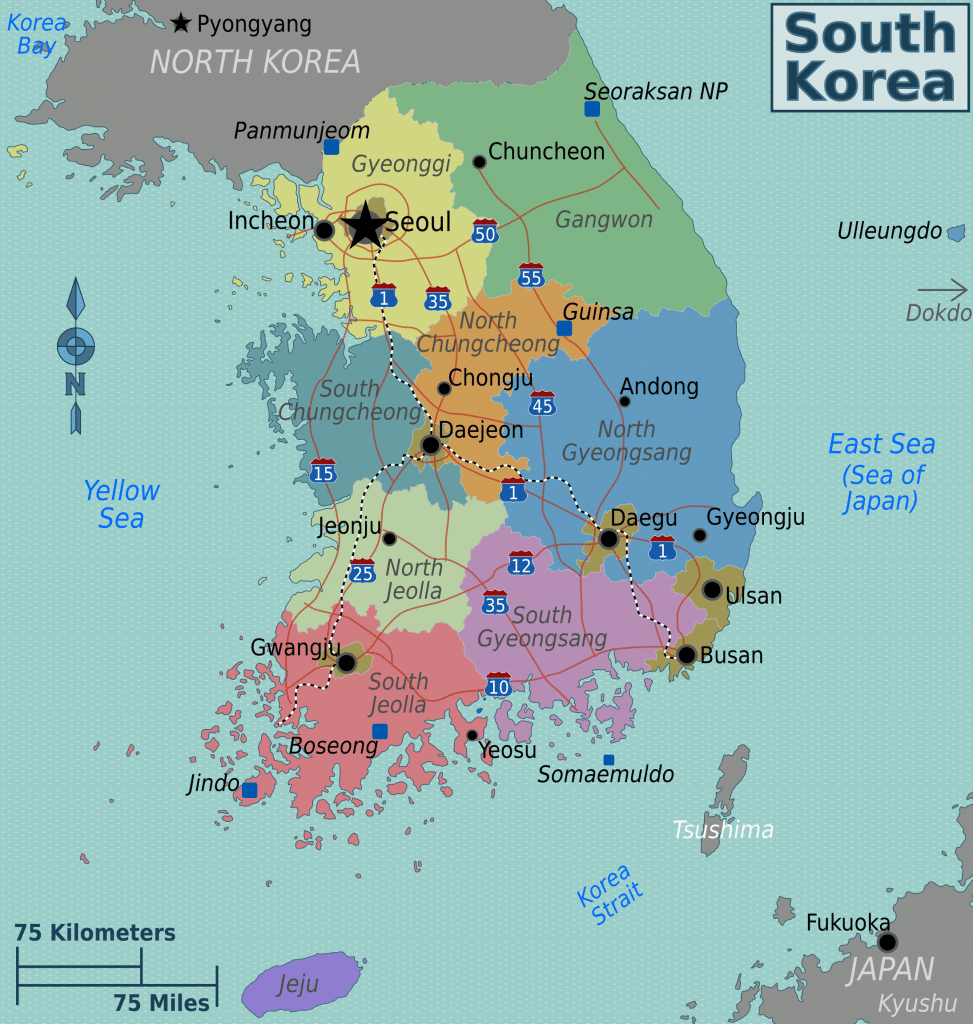How South Korea is Painting Its Way out of Poverty
On a warm June day, the ocean breeze cools balmy Busan, South Korean’s busiest port city. As I stand overlooking Gamcheon Culture Village nestled on the coast, I shiver as I imagine what it once was: a dangerous slum, ravaged by war.
Nowadays the rainbow facade of Gamcheon Culture Village couldn’t be more vibrant or inviting. Children from around the world clutch ice lollies while young couples snap selfies with a backdrop of Busan’s most colourful attraction. It’s hard to imagine this as a place of sadness, hunger, and fear, yet I’m told there was little to celebrate in Gamcheon for several decades.
The Korean War
Without the Korean War, Gamcheon Culture Village wouldn’t exist. In fact, without the Korean War, many of Korea’s regeneration projects wouldn’t be necessary.
The war began in 1950 and devasted Korea, claiming 50,000 lives. In a nutshell, the country had been divided into two parts following Japanese occupation: the Republic of Korea (South Korea) and the Democratic People’s Republic of Korea (North Korea). The latter hoped for reunification under a communist government backed by China, while the south resisted the movement with support from the United Nations.
While North and South Korea have yet to make peace to this day, the direct and deadly civil war lasted three years (June 25, 1950 to July 27, 1953).
Migration to Busan
Based on nothing but its geographical location, Busan became one of the safest places in South Korea. With Seoul located so close to the North Korean border, the capital was a dangerous place to be. Thousands of families were displaced, arriving in the southern city of Busan by the boatload. In a matter of months the city’s population doubled, reaching 1.4 million.
The coastal slums of what is now known as the Gamcheon Culture Village were one of the first sights arriving refugees saw.
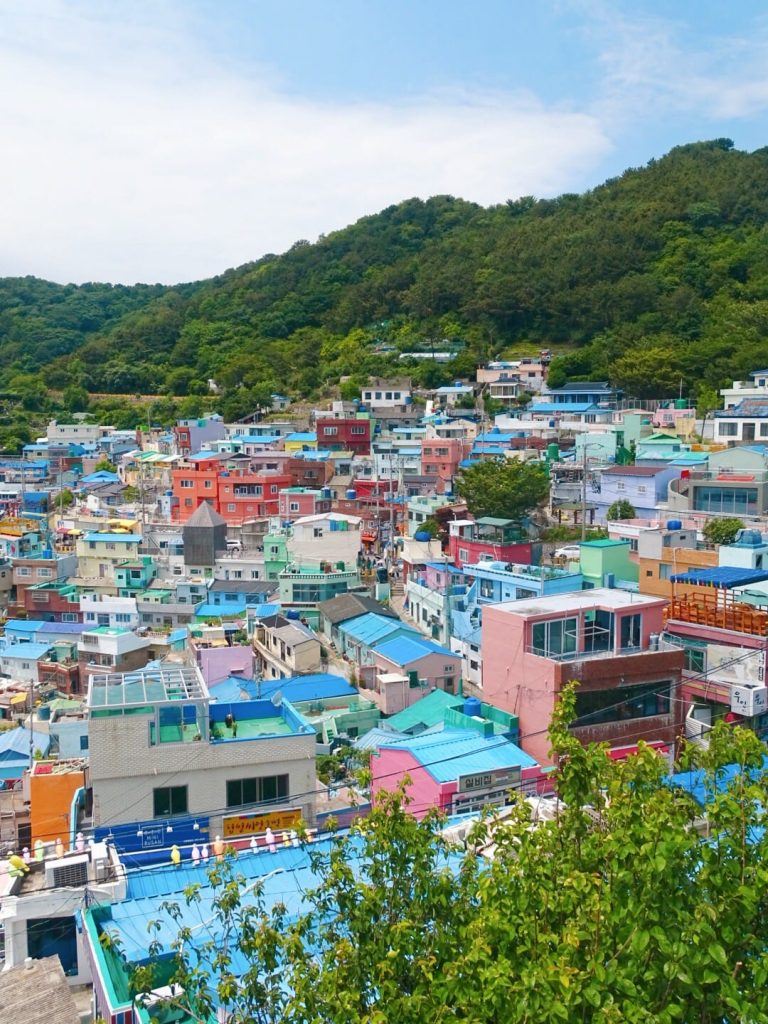
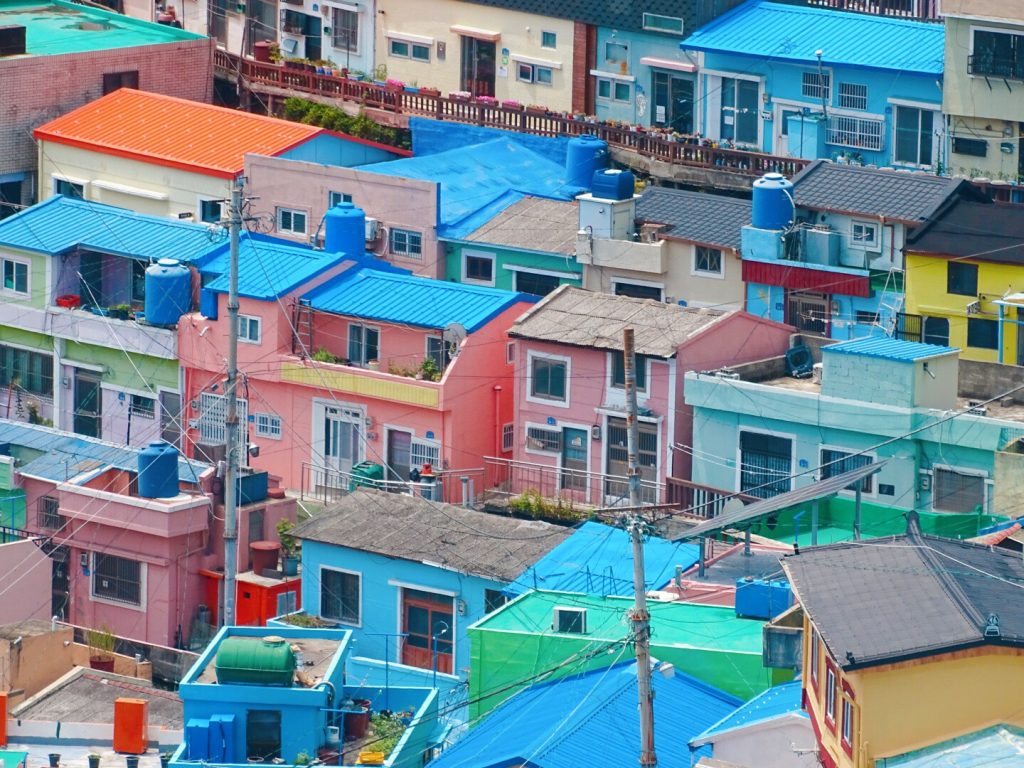
From peaceful village to sprawling slum
What was once a small village of 10 or so houses quickly grew as the city centre became overcrowded. Around 4,000 refugees settled in Gamcheon, building basic houses from scrap metal and driftwood. During the next few decades, the local residents struggled financially. There was little in the way of employment, and parents struggled to feed their families and maintain the neighbourhood.
In the 1970s, improvement came about due to a wealthy religious individual named Chol-je Cho. He introduced the religion of Taegukdo, one closely tied to the idea of yin and yang. Cho believed that the locals needed something to believe in and offered them supplies and food in exchange for committing themselves to the religion.
Thanks to continued financial support from Cho, life improved considerably for what became known as Taeguk Village and within 20 years, houses were made of wood rather than corrugated metal and most had two storeys.
The 2009 revival
While Taeguk Village was far from a wartime slum, the neighbourhood was still poorer than the average Busan neighbourhood. The Ministry of Culture, Sports and Tourism stepped in with a vision of remodelling the village into an artistic community and playground for local creatives. Not only did they have a plan to attract tourist dollars, but they also had a new name in mind: Gamcheon Culture Village.
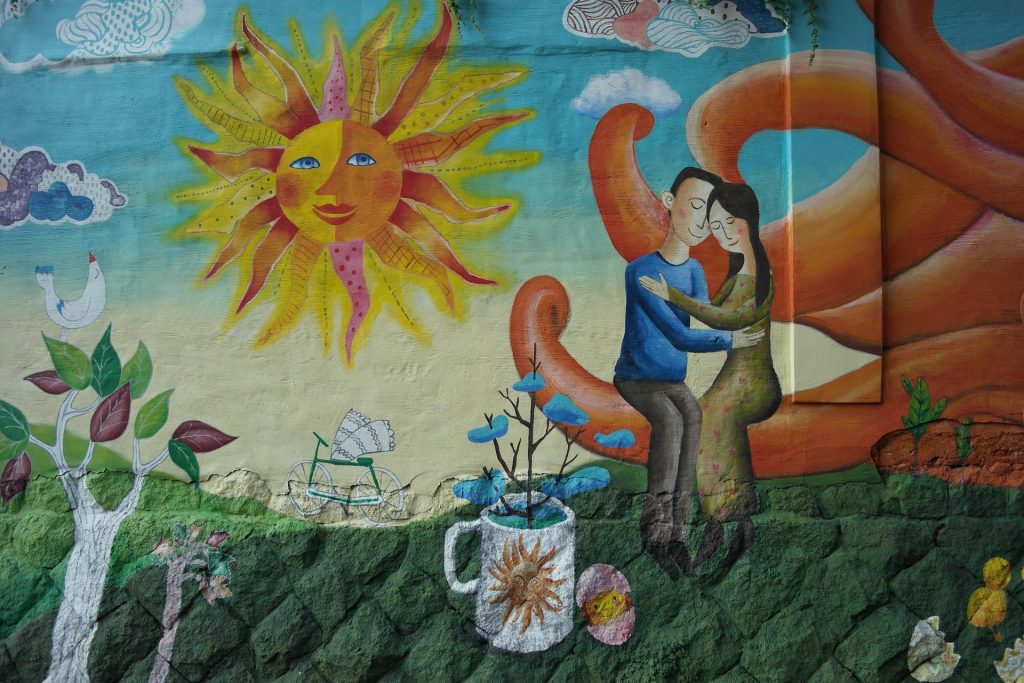
Following in the footsteps of Ihwa Mural Village, a recently generated neighbourhood of Seoul, the first phase of the revitalization involved brightening the village with street art. If locals had preconceptions of tatty graffiti, these would quickly vanish as 10 vibrant, larger-than-life murals popped up in the streets, created by talented local artists.
Next came galleries. Six areas of the village were identified, either vacant houses or confined alleyways that could be transformed into mini galleries. Quirky, interactive art pieces were put on display and workshops for the public were set up. Tourists could learn to make pottery and trinkets in locally-led classes that provided a source of income for resident tradespeople.
Finally, a clear tourist route was determined through the village, transforming Gamcheon from a maze of modest homes to a well-mapped attraction with a clear beginning and endpoint. Paper maps were printed to help visitors to explore Gamcheon and find the galleries and workshops.
Response from locals
Gamcheon wasn’t immediately popular with the locals. They were understandably wary of the sudden influx of foreign tourists, especially those who carried cameras and captured locals in their shots.
In the new age of tourism, Gamcheon began to raise increasingly common ethical questions. Social boundaries had to be redefined as tourists and locals learnt to co-exist and understand each others’ concepts of respect and privacy.
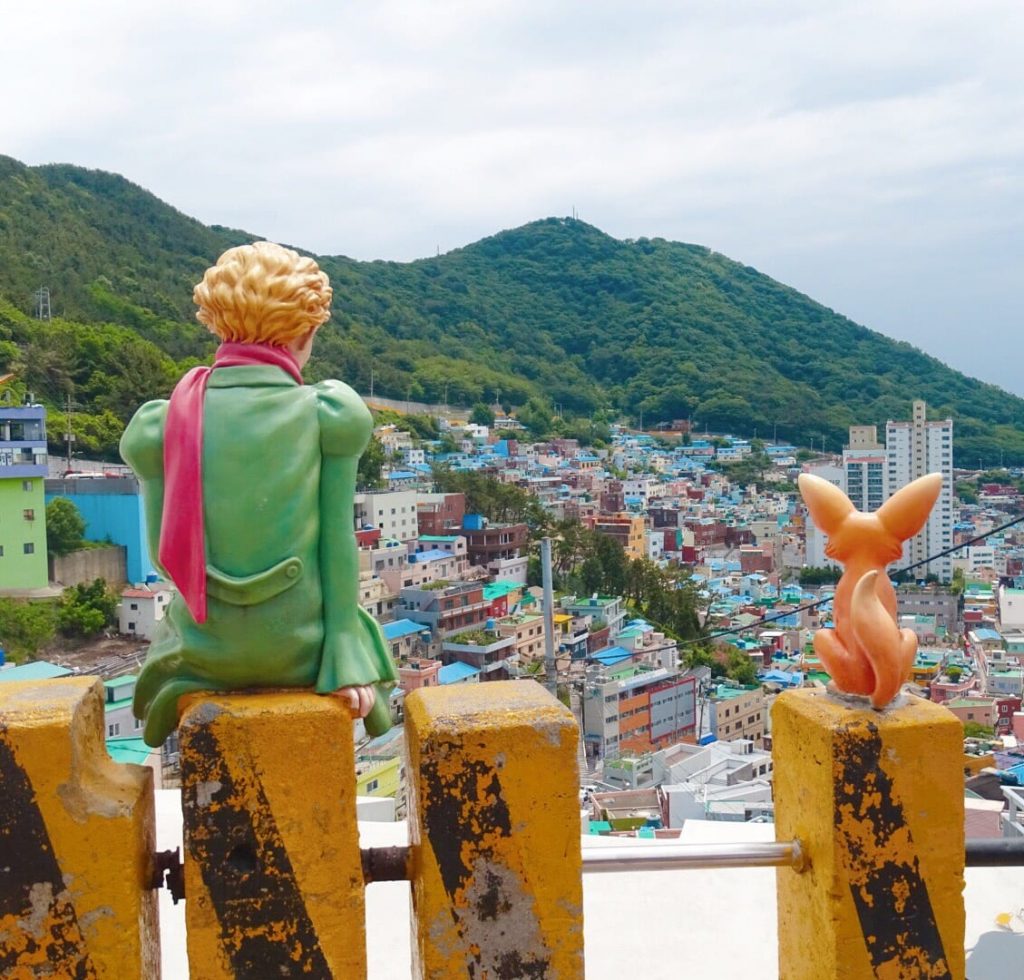
Luckily, the pros began to outweigh the cons for the Gamcheon Culture Village residents. In the last decade, tourism has enabled them to earn a decent income without travelling to the city each day. Unemployment rates have dropped, and funds to maintain local homes are more easily available.
Gamcheon Culture Village today
The original 10 urban murals and handful of mini galleries have been joined by countless others. Colourful art installations line the streets and lifelike statues can be spotted carrying out daily tasks. From afar, some are eerily realistic.
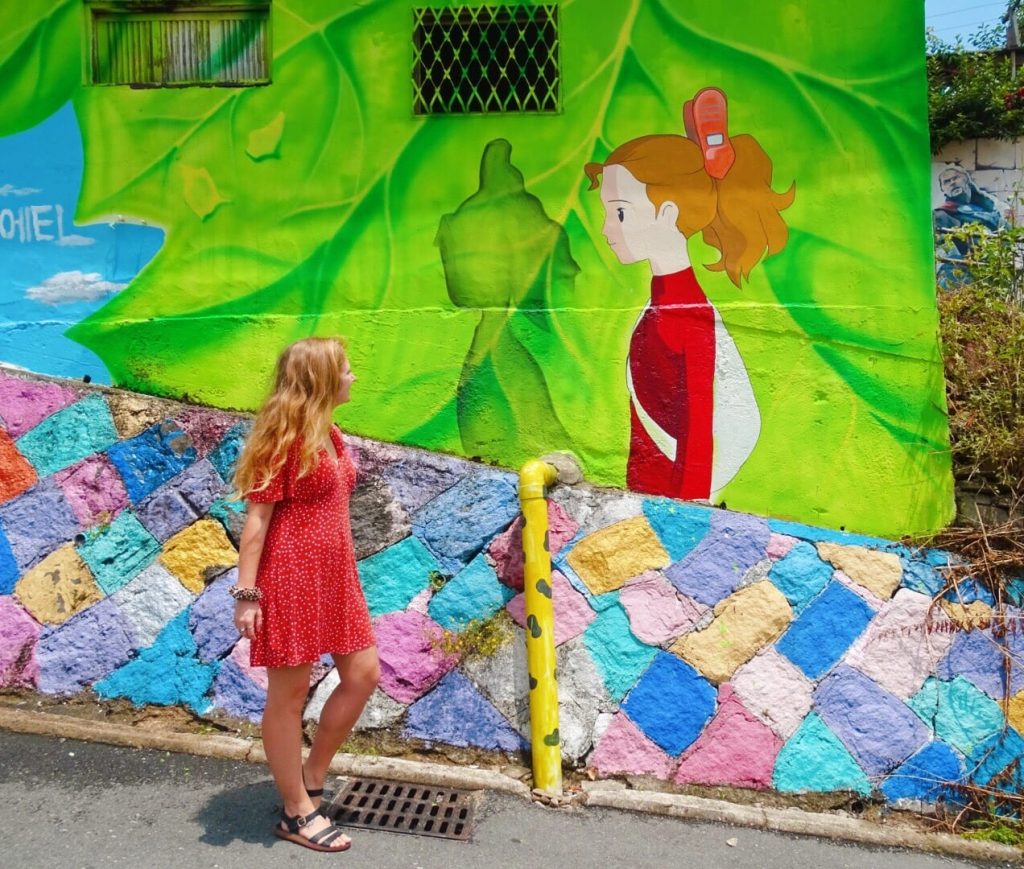
Almost every house in Gamcheon is painted a dreamy shade of blue or pink, earning the hillside area a new nickname: The Santorini of South Korea. Countless cafes and food stalls encourage tourists to spend a day in Gamcheon, following maps available at the Tourist Information Office and collecting stamps from a number of marked locations. If they collect enough, they earn postcards to send home as souvenirs.
Meanwhile, other cities in South Korea are waking up to the power of art as a regeneration tool. Street art villages are emerging in areas that have traditionally missed out on tourism, taking power into their own hands as they find new ways to earn an income. Traditional Jeonju, a small city known for its well-preserved hanok houses, is now home to a vibrant mural village on the outskirts.
Korean arts groups have spread the trend even further, helping communities in other countries (such as Vietnam) create their own mural villages. As locals create savvy new ideas to put their hometowns on the map, the future looks bright for forgotten corners of the world.
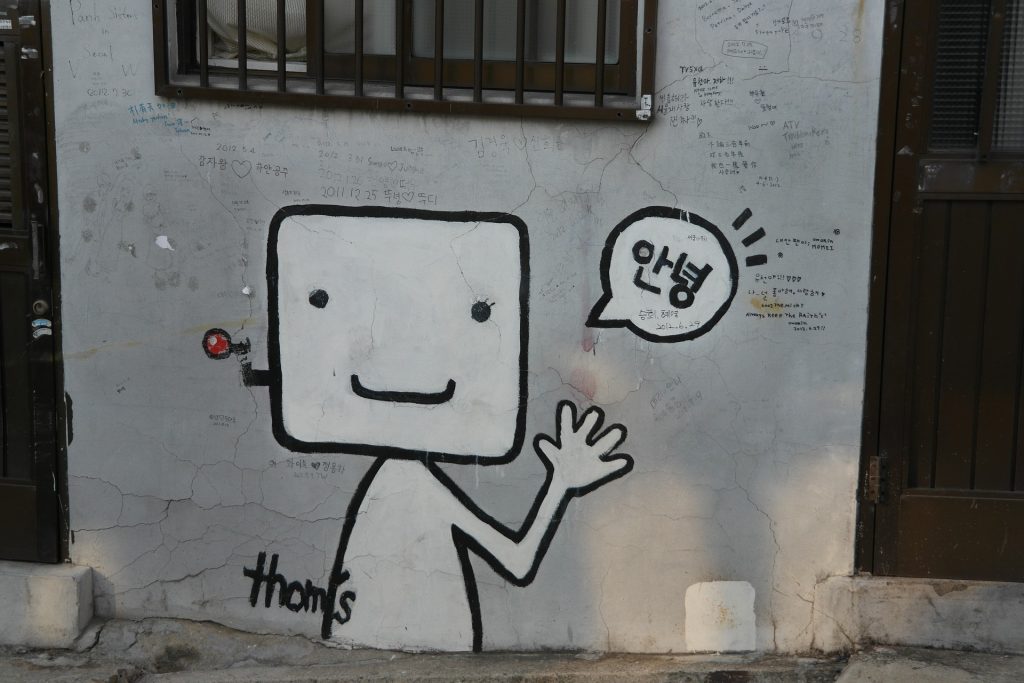
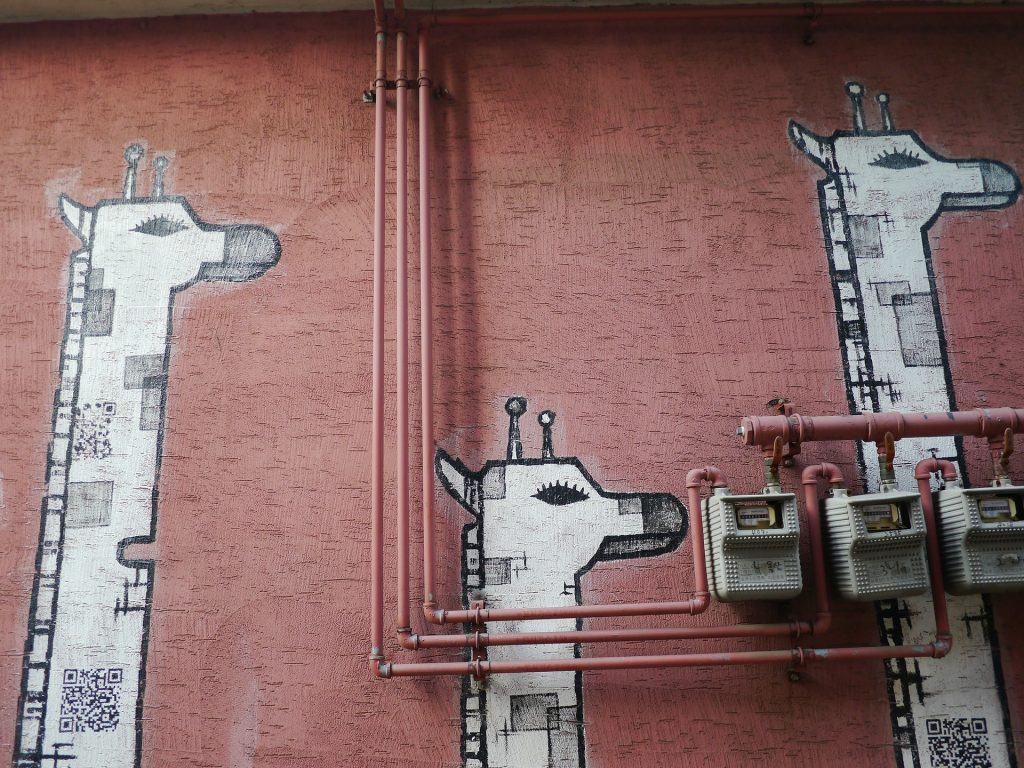
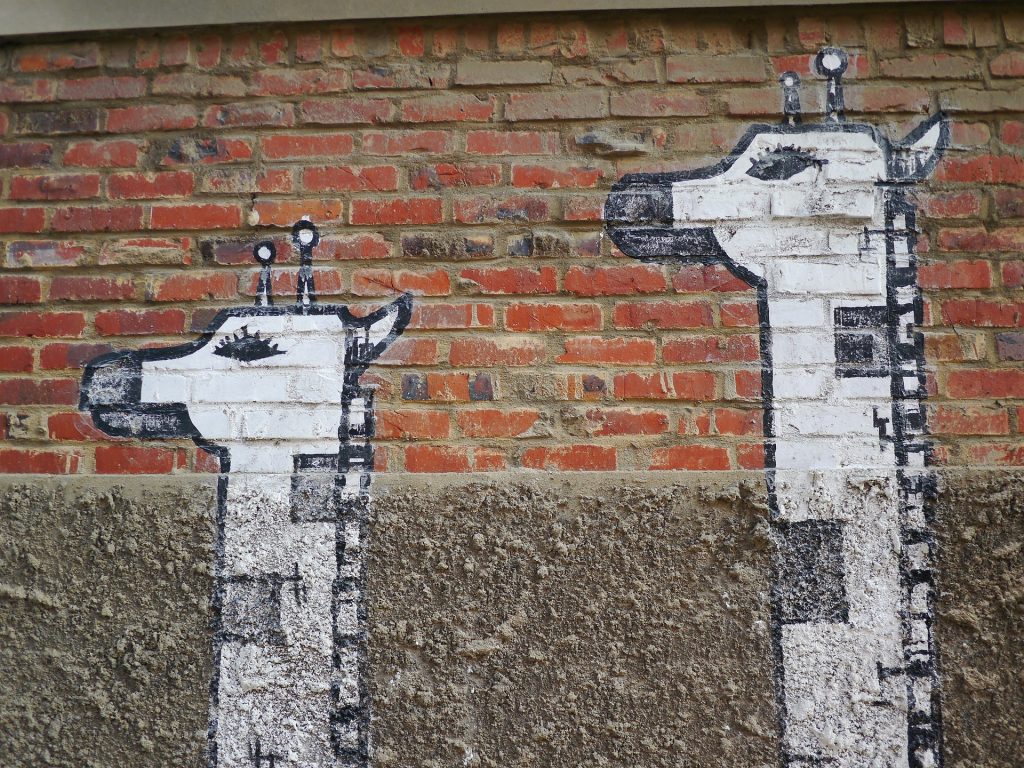
Book a Stay in Gamcheon Culture Village, South Korea
Search, compare and book hotels & rentals at the best prices that are sourced from a variety of platforms including Booking.com, Hotels.com, Expedia, Vrbo and more. You can move the map to search for accommodations in other areas and also use the filter to find restaurants, purchase tickets for tours and attractions and locate interesting points of interest!

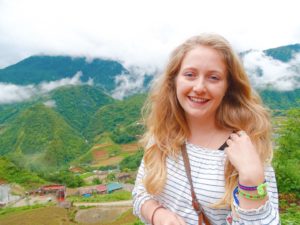
Rose Munday is a travel writer and blogger originally from the UK but currently based in Southeast Asia. She seeks out culture, food, street art and iced coffee at every turn! You can read about her adventures at www.wheregoesrose.com.
